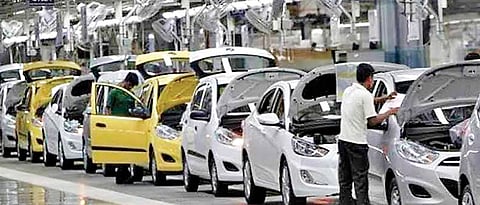

Much has been said and talked about the automobile industry crisis the country has been facing for the past few years. In 2019, vehicle production and sales witnessed a sharp decline in numbers as compared to the previous year.
The shift from BSIV to BSVI emission norms to meet the Paris Climate Agreement resulted in a massive pending stock due to miscalculations of customer sentiments, primarily attributed to the entire BSIV-BSVI know-how fiasco. Issues like high GST amount, mandatory three-year insurance, ease of hiring cabs and cultural shift added to the woes. Automobile dealerships and the auto component industry took a major hit with many dealerships shutting down or laying off staff across the country.
In this gloomy but decisive year, four manufacturers carved a silver lining for themselves. Given the Indian buyers’ comfort zone, Maruti Suzuki with their BSVI line-up and Hyundai, specifically with the Venue and a slew of other facelifts survived the tide. However, new entrants, Kia and MG broke the mould and did phenomenal business hinting at the times ahead. The booming sales figures forced MG to temporarily shut down bookings for Hector.
However, with only four manufacturers out of the plethora in the country hitting their targets is not a positive sign for the entire industry. The country’s automobile industry demands a targeted and focused approach to survive.
EV ready?
The government’s call in 2013 under the ‘National Electric Mobility Mission Plan (NEMMP) 2020’ to move to electric vehicles was well received by Original Equipment Manufacturers (OEMs). However, the real push came after the government launched Faster Adoption and Manufacturing of (Hybrid &) Electric Vehicles in India (FAME India) Scheme in 2015 to promote manufacturing of electric and hybrid vehicle technology. Under the scheme, grants were sanctioned for pilot projects and research and development of electric and hybrid technology.
Local manufacturers like Mahindra and Tata have invested heavily in the electric vehicle segment with the Mahindra e20, e-Verito and Tata Tigor EV already in the market, while Tata Nexon EV and others expected to hit the roads soon. Hyundai and MG too are banking on the market with the already launched Kona and the upcoming ZS, respectively.
The current electric vehicles sales in the country are not very reassuring but the EV price bracket has never been this lucrative before and in reach of the majority of automobile buyers. What remains, after all these years and planning is the required infrastructure.
As OEMs struggle to set up the groundwork for their EV customers themselves, a solid foundation and backing from the government in terms of charging stations, probably at fuel pumps, and availability of regular power supply across the country is what is needed to boost EV sales.
On January 3, 2020, the government-sanctioned setting up of 2,636 charging stations in 62 cities across 24 states and Union territories.
Under the second phase of FAME India Scheme, 317 EV charging stations have been sanctioned in Maharashtra, 266 in Andhra Pradesh, 256 in Tamil Nadu, 228 in Gujarat, 205 in Rajasthan, 207 in Uttar Pradesh, 172 in Karnataka, 159 in Madhya Pradesh, 141 in West Bengal, 138 in Telangana, 131 in Kerala, 72 in Delhi, 70 in Chandigarh, 50 in Haryana, 40 in Meghalaya, 37 in Bihar, 29 in Sikkim, 25 each in Jammu, Srinagar, and Chhattisgarh, 20 in Assam, 18 in Odisha and 10 each in Uttarakhand, Puducherry and Himachal Pradesh.
An encouraging trend is also the eagerness of the civic administration in major Indian cities to incorporate electric buses in their public transport fleet.
Vehicle Scrappage Policy
In what is expected to be a game-changer for the auto industry, the government of India’s plan to introduce a vehicle scrappage policy is in its final stage and is awaiting Cabinet’s nod. The policy is expected to revive the ailing industry. Under the proposed policy, the expected timeline is 15 years for passenger vehicles and 10 years for commercial vehicles. The fee for re-registration of the vehicles is also expected to increase.
More than a million old vehicles pile up on our roads every day without up-to-date emission norms. The scrappage policy will clear these polluting vehicles. The government also aims to aid the country’s steel industry by recycling and reusing the scrapped metal and reduce the heavy import costs. A colossal example is reusing of the INS Vikrant metal in the manufacture of Bajaj V. The vehicle price hike by the OEMs due to the rising cost of metal imports is also expected to decrease.
As per sources, the government is mulling setting up scrapping centres in cities by getting various stakeholders en masse for the consumers.
The strict compliance of BSVI emission norms from April 1, 2020, is also expected to provide positive news to manufacturers and hard-hit dealers. Hopefully, 2020 will be a more productive year, figuratively and literally.
